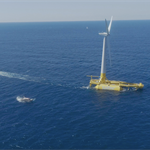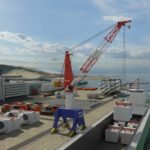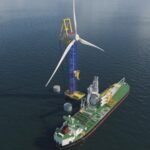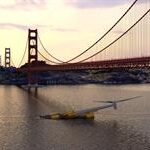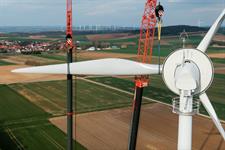Analysis: RWE-backed startup wins new backing for aluminium wind turbine crane
Energy Disrupter
WindSpider – which has already won backing from German utility RWE – has now begun an industrial partnership with Norwegian aluminium specialist Leirvik, which will also invest into the company. It is as-yet unclear how much aluminium WindSpider plans to use in its cranes.
A wind power technology expert believes the crane’s design could enable the use of lightweight aluminium, though he flagged challenges with using the technology offshore.
The Leirvik announcement comes as WindSpider plans to start building its first full-scale self-erecting crane unit for wind turbine installation.
The company’s design entails a modular, self-erecting crane system that surrounds the wind turbine tower like a spider web. This cage-like installation structure then uses a pulley system to move up and down the turbine and raise new modules onto its structure.
It can be used for turbine installation onshore and offshore – including for turbines on floating platforms. the startup added.
WindSpider claims the system will have a lifting capacity of more than 1,500 tonnes, meaning it would be well-placed to install some of the largest offshore wind turbines currently in production.
The entire spider web structure is designed to lift off once the installation progress completes, and can also be used for maintenance operations.
With the Leirvik deal, WindSpider now plans to use aluminium as a significant material in the composition of its first crane system.

A spokesperson for the company told Windpower Monthly the amount of aluminium expected to go into the crane is “to be concluded with Leirvik” as they stressed the advantages of the lightweight metal.
“It comes with several benefits including substantial weight reduction, as well as improved production methods and maintenance,” the spokesperson said.
Commenting on the design, Windpower Monthly’s technology and market trends correspondent Eize de Vries said the lattice-like structure of the crane should mitigate the relative lack of tensile strength of aluminium compared to steel, with the greatest challenges faced by the WindSpider team likely to come during installation.
“They face exactly the same problem that other crane projects face which is putting them on floating structures. It requires really hi-tech solutions because the floater moves. Especially if the wind speed is high and you’ve got big waves. The main challenge is to get it installed on the tower,” de Vries said.
The WindSpider spokesperson claimed that offshore, the company’s design will mitigate challenges posed by marine conditions. They added that with “flexible wind turbine installation from port, inshore or offshore”, the design is “compatible with existing vessels and barges” and “eliminates the issue of relative motion between the turbine and the WindSpider crane by becoming a part of the same structure as the wind turbine”.



